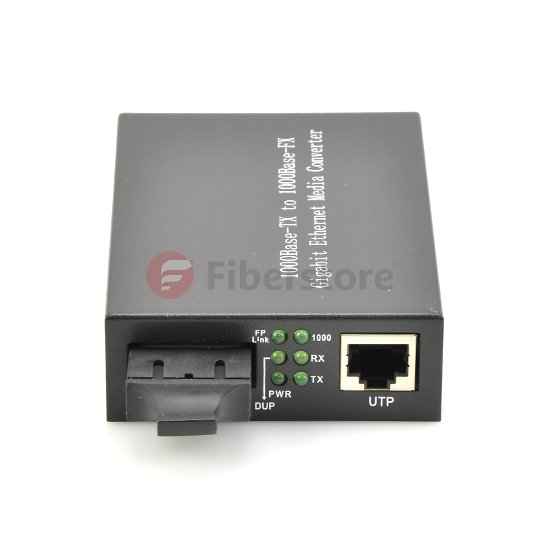Fiber media converter or fiber converter is a device that links two different media signals for conversion, usually exchanging the signals on a copper cable with signals on an optic fiber cable. This device is often used in MAN (metropolitan area network) access and data transport services to enterprise customers. Fiber media converter provides a balanced flow, isolation, conflict and detection of errors and other functions to ensure high security and stability of data transmission. It also breaks the restriction of the Ethernet cable length to more than one hundred meters.
For a long time, fiber media converter is an indispensable part of the actual network set up. And it will continue to transform towards the orientation of high intelligence, high stability, easy management and low cost. Of course, selecting a right fiber media converter is also very essential to the actual applications. This article will mainly introduce some aspects to be considered when purchasing the fiber media converter.
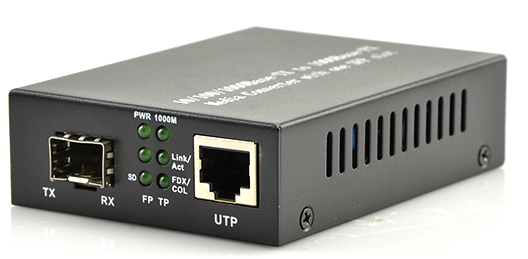
Knowing the function of fiber media converter helps you have a better understanding of your own system which contributes to the selection process. Generally speaking, fiber media converter receives data signals from one media and converts them to another while remaining invisible to data traffic and other net devices. It supports quality of service and layer 3 switching since it has no interference with upper-level protocol information. Fiber media converter changes the format of an Ethernet-based signal on twisted pairs into a format compatible with fiber optics. At the other end of the fiber cable run, a second media converter is used to change the data back to its original format.
Fiber media converter supports full duplex Ethernet over UTP at 20 or 200 Mbps, and half-duplex Ethernet over UTP at 10 or 100 Mbps. Full duplex Ethernet is more efficient for connecting two switches or one switch to a file server. Also, fiber optic media converter can automatically sense which mode is in operation without any adjustment for mode switching.
Here are some factors that you can consider when purchasing a fiber media converter:
- First, according to different data rates, there are various fiber media converters to match the transmission speeds. Thus, data rates should be considered as an important factor.
- Second, figure out what transmission media are in your network, and find the corresponding cable types. For instance, there are fiber to copper, single-mode fiber to multimode fiber, dual strand to single strand and so on.
- Third, diverse fiber media converters have different port types. Typically, there are two types of ports, one for copper and the other for fiber. The copper ports are all designed for RJ45 copper cables. But in terms of fiber ports, there are also another two types. One is designed for fiber optic transceivers (SFP, XFP, etc), and the other for fiber optic patch cables (SC, LC, etc).
- Fourth, transmission distances of fiber media converters are varied to satisfy different length demands.
- Fifth, if main power is not available or difficult to deliver in physical locations, PoE fiber media converter can be an option to supply the required power.
- Sixth, different power supplies are also available. For example, AC (alternating current) power supply, DC (direct current) power supply, internal power supply and external power supply are the common choices.
Fiber optic converters can be used in lots of applications. Here are some examples. Point to point application can connect two UTP Ethernet switches (or routers, servers, hubs, etc.) via fiber, or to connect UTP devices to workstations and file servers.
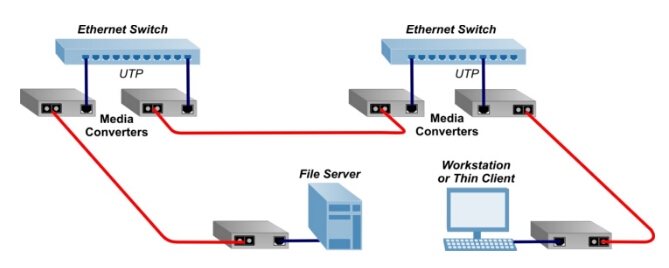
10G Ethernet application extends distances between 10G switches and servers.
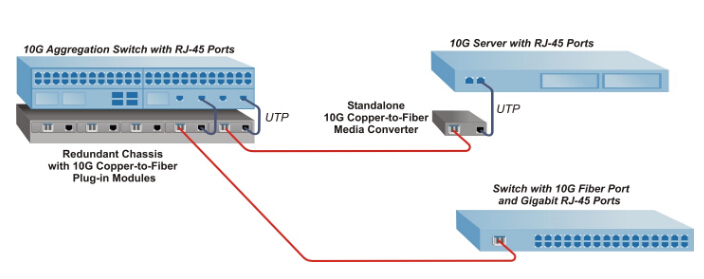
Multimode to single-mode application extends a multimode network across single-mode fiber with distances up to 160 km.
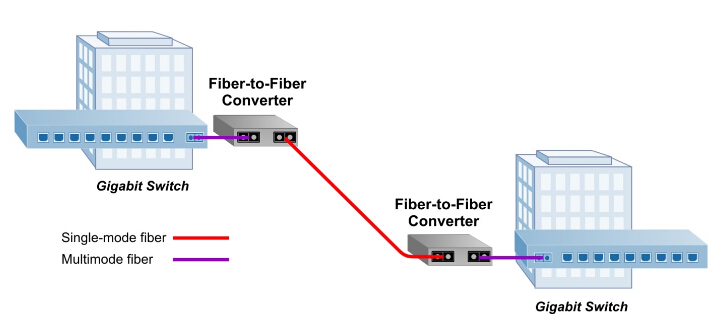
Fiber media converter plays an important role in today’s multi-protocol, mixed media networks. Many types of fiber media converters like fiber to RJ45 converters, SFP Ethernet converters are purchasable on the market now. Please regard this article as an reference for finding a suitable fiber media converter in your network.

